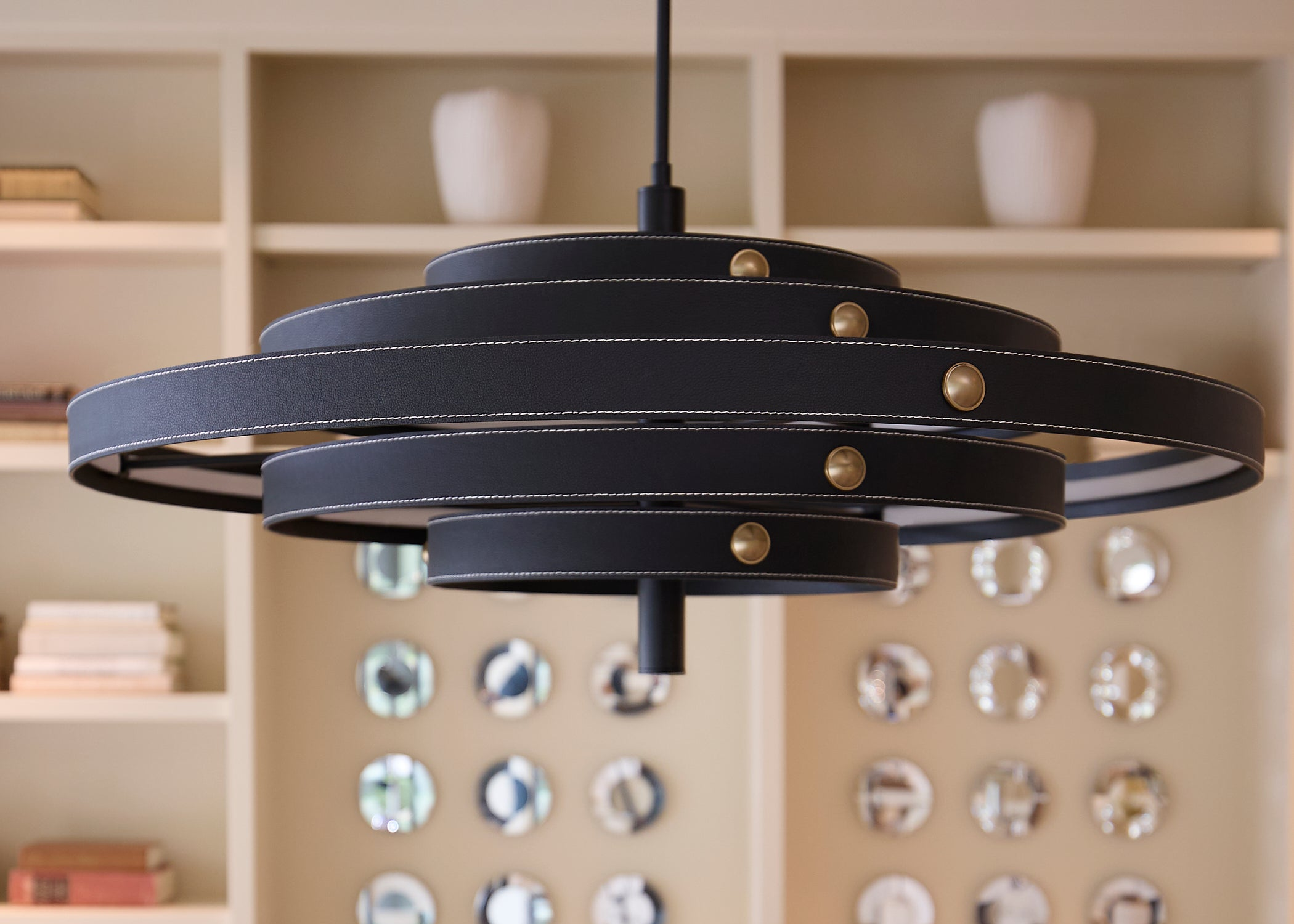The Bathroom
HOW TO LIGHT YOUR VANITY
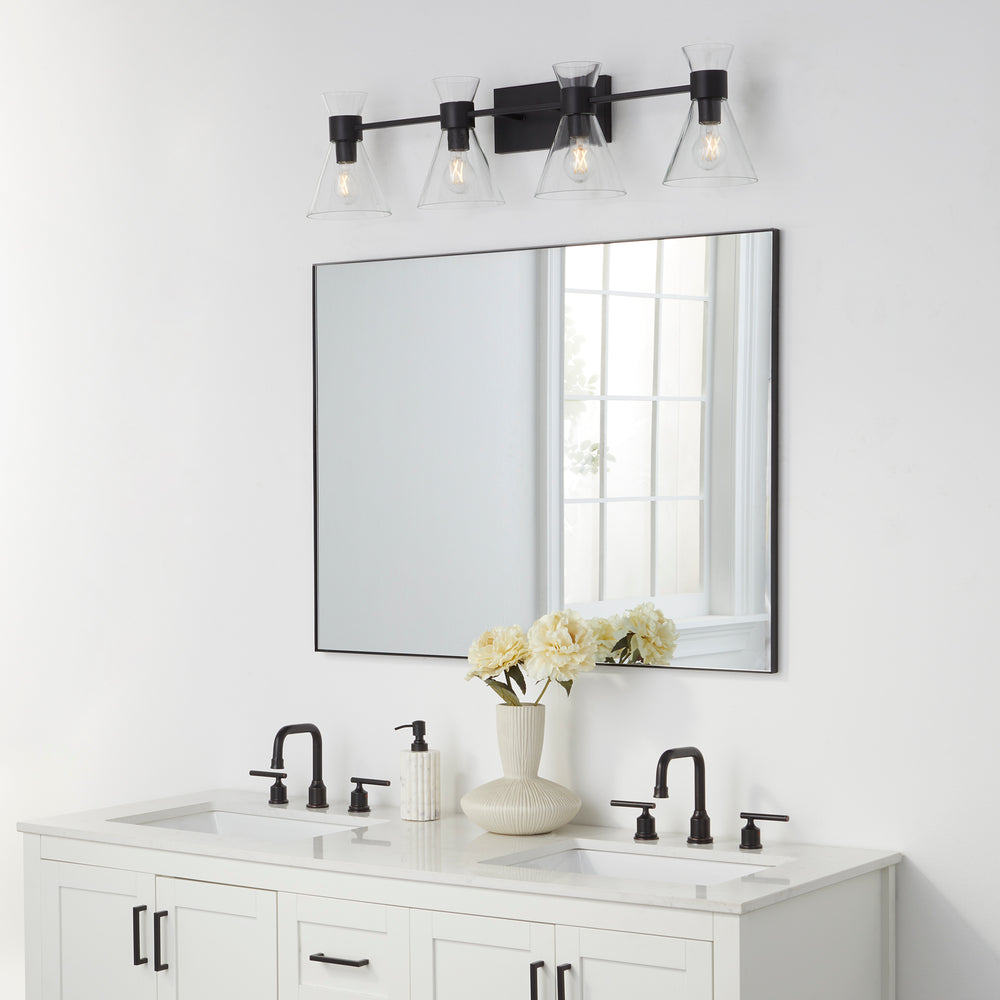
Create symmetry with sconces placed a few inches on each side of your mirror, spaced at least 26–30 inches apart. Keep the midpoint of the sconce backplate about 5 feet above the floor for ideal balance.
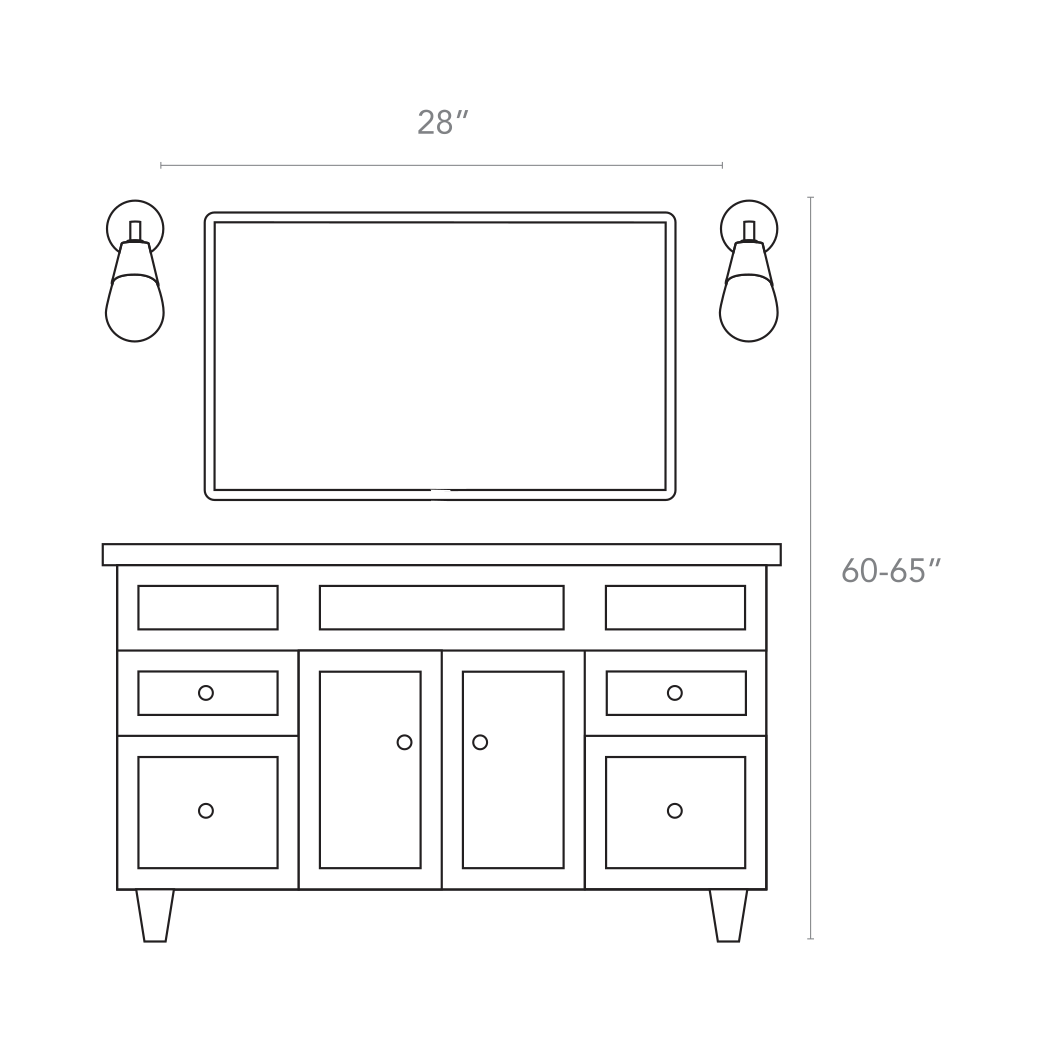
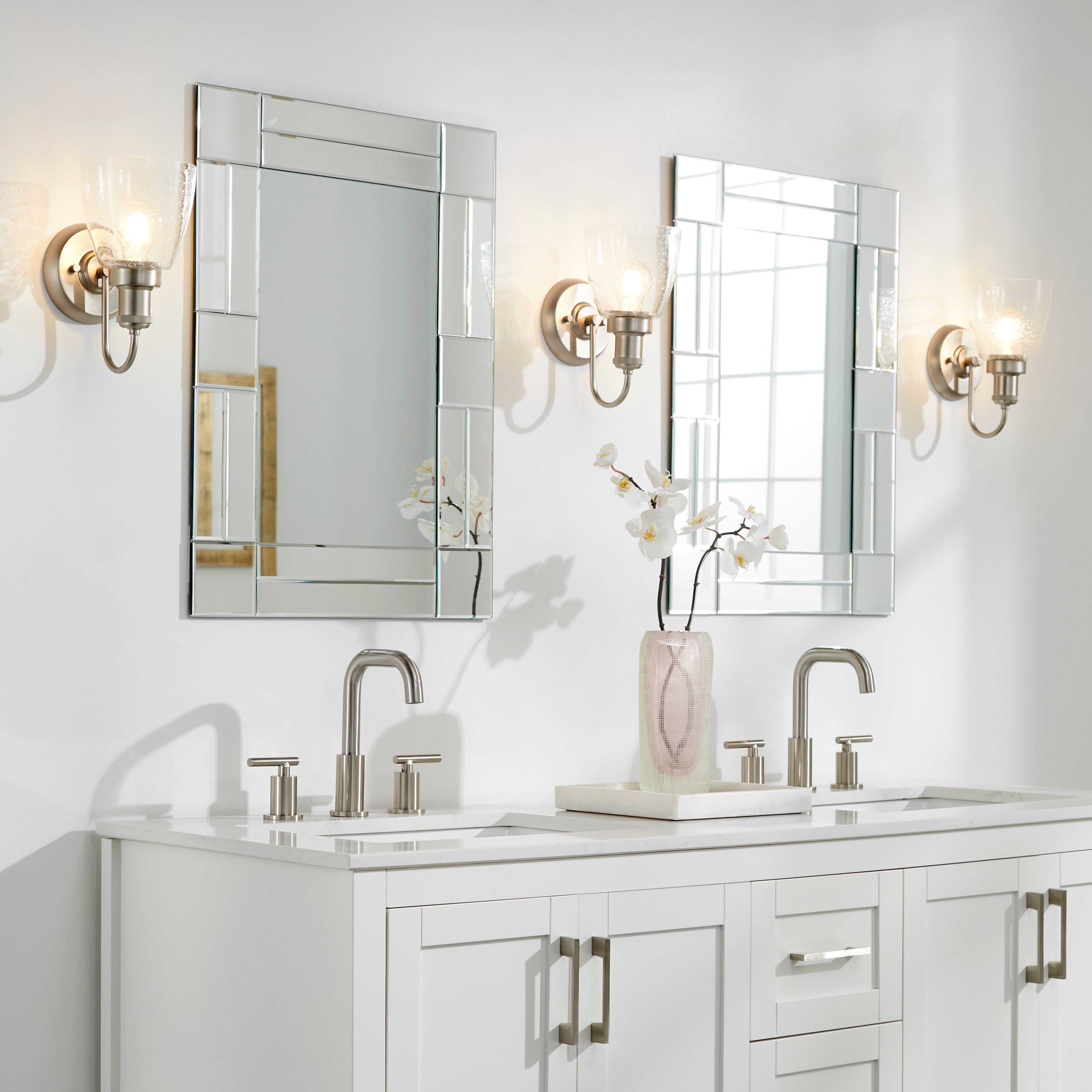
Maintain a distance of about 75 inches between the floor and the lowest point of the fixture.Match the fixture width to about 3/4 of the mirror’s width, avoiding overhang. Opt for minimal wall extension to reduce shadows.
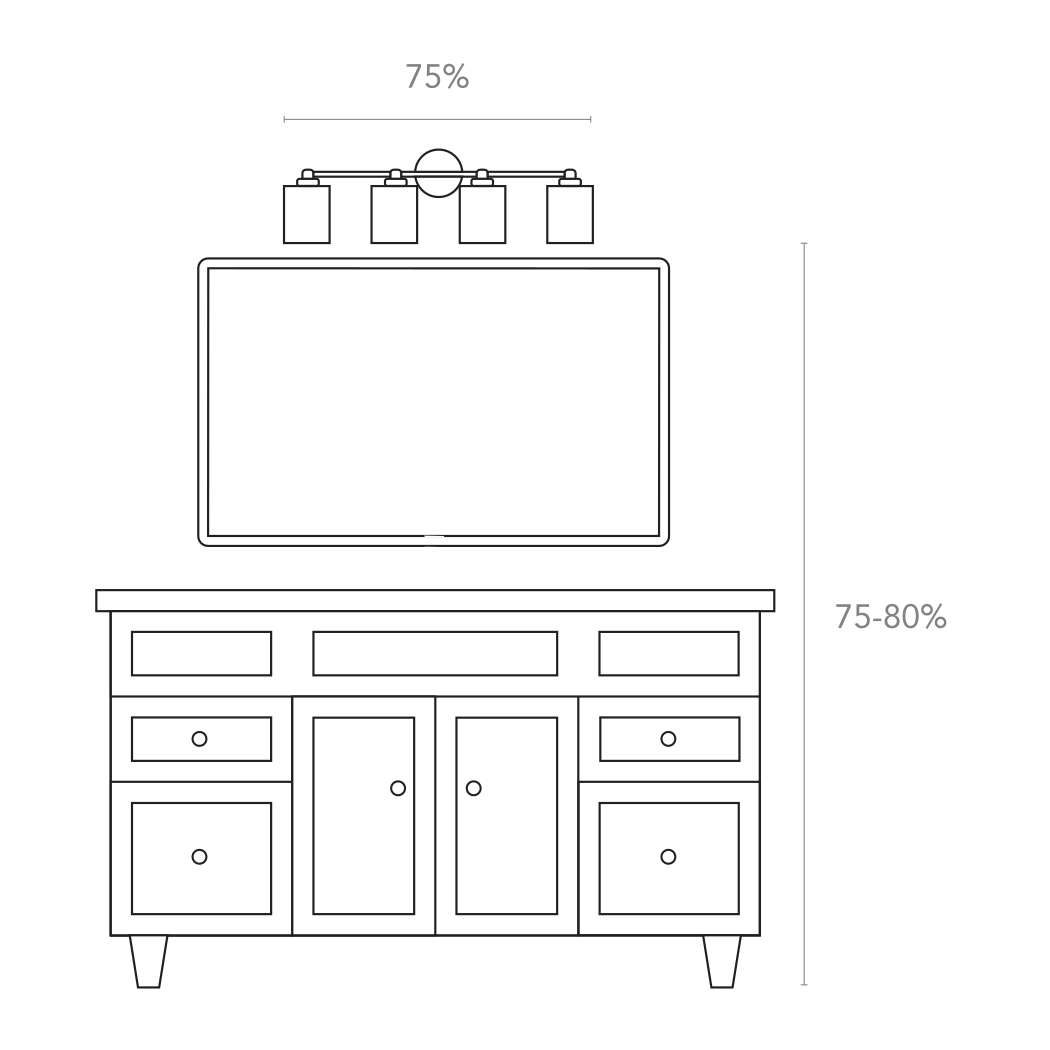
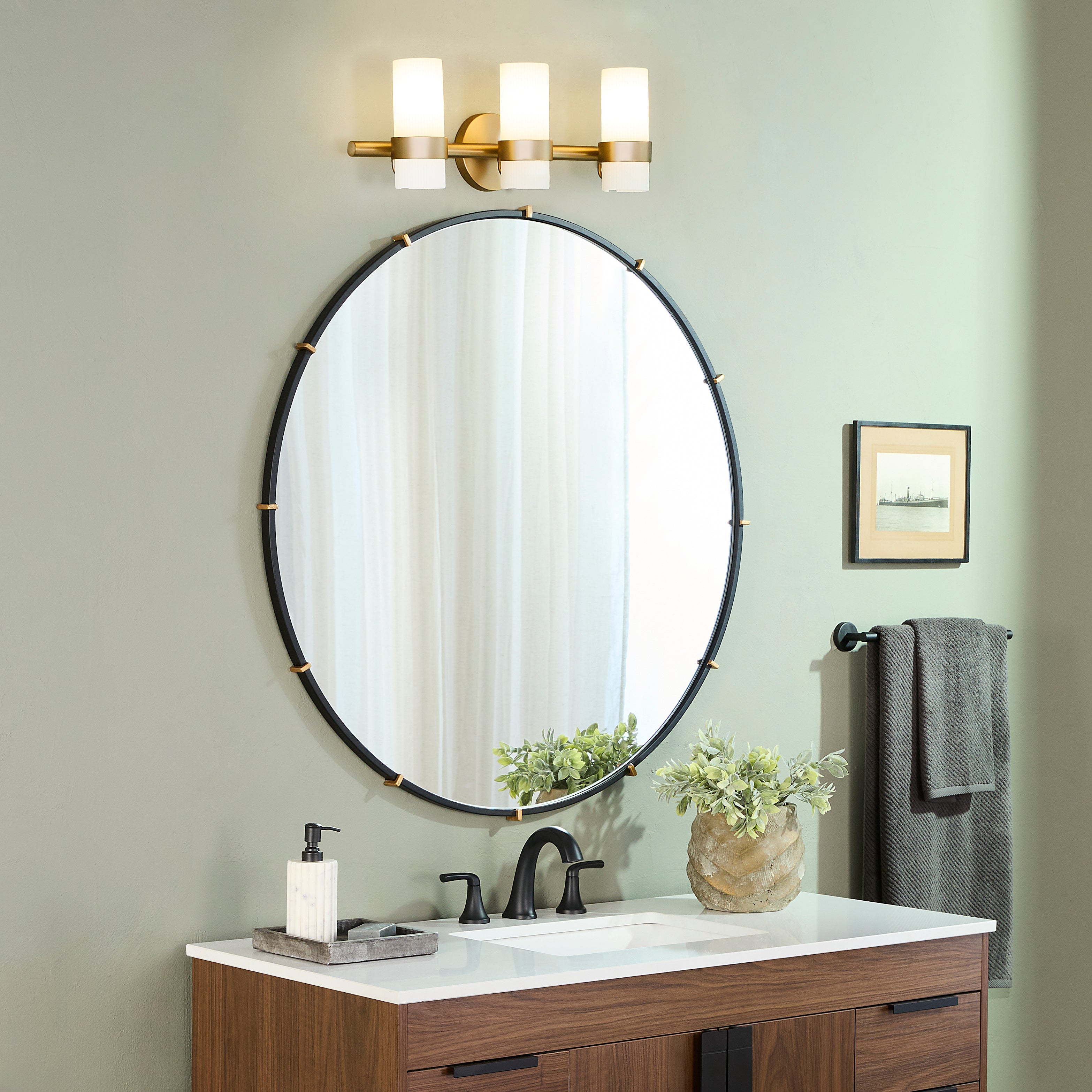
Designer Tip:
Dimmer switches allow you to adjust the brightness of the lights according to different tasks and moods. For example, you can dim the lights for a relaxing bath or increase the brightness for grooming tasks. Additionally, dimmer switches can help conserve energy and extend the lifespan of your light bulbs.
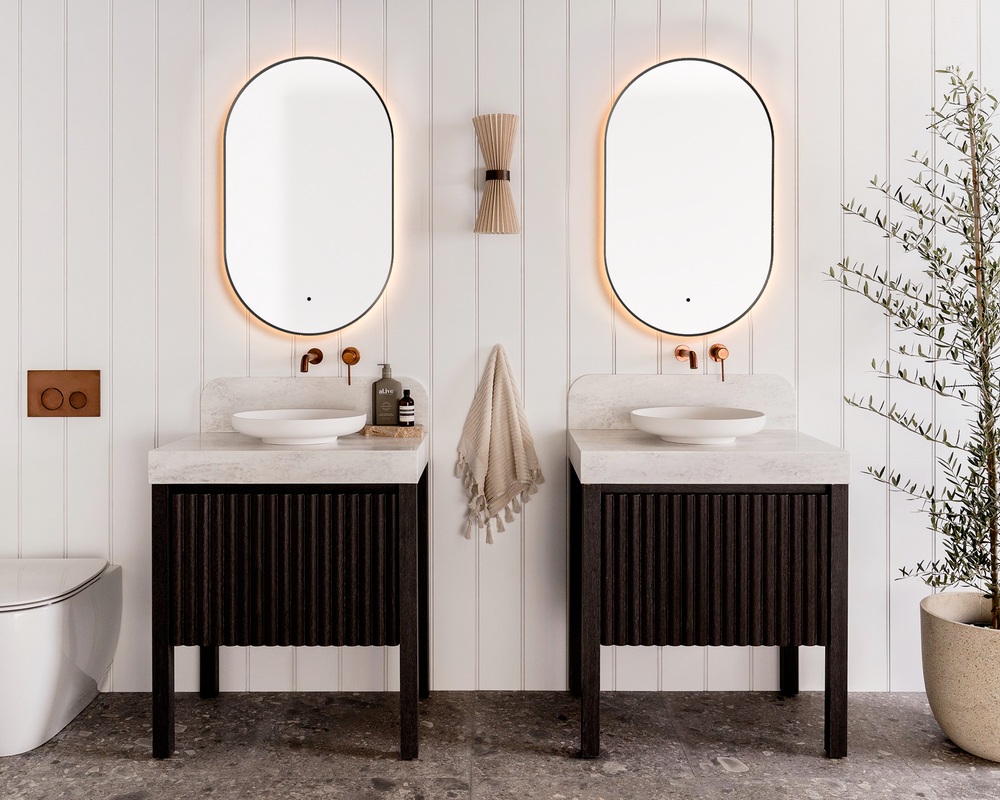
Ensure that the mirror is placed roughly 60 inches from the floor or at eye level so you can see yourself clearly when standing in front of it. If you have a taller faucet, adjust slightly and hang the mirror 2–3 inches above the tallest point of the faucet for the best look.
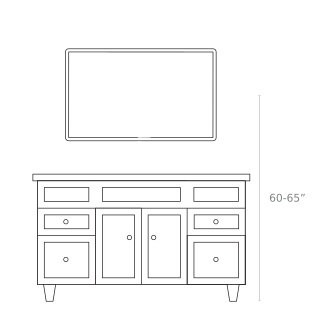
The Kitchen
HOW TO HANG OVER AN ISLAND
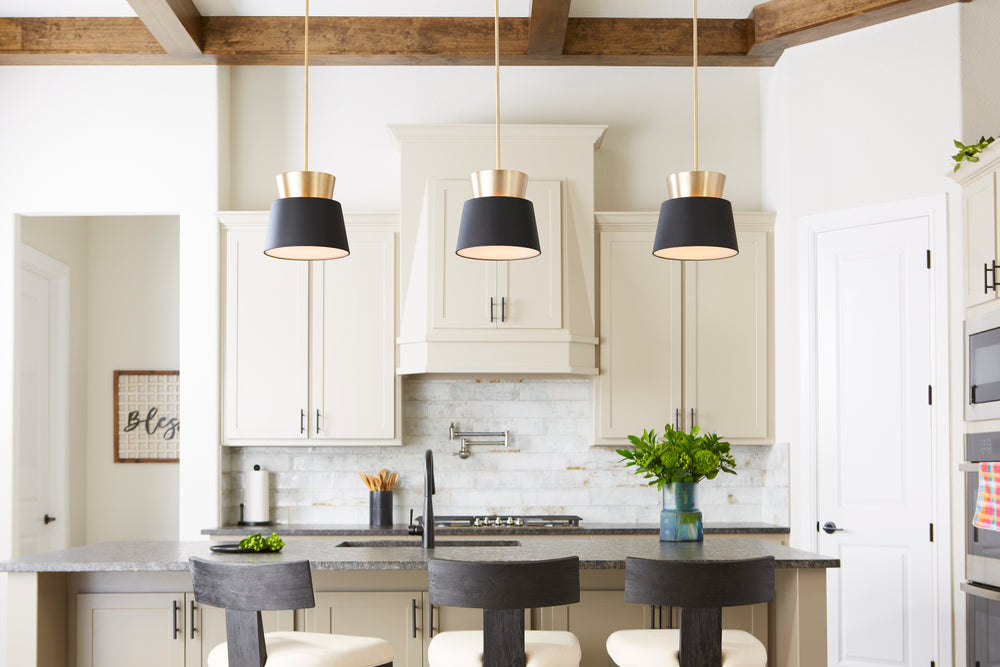
Maintain a distance of 2.5 feet between the widest part of the shade.
Ensure there’s a gap of about 3 feet between the counter surface and the fixture base.

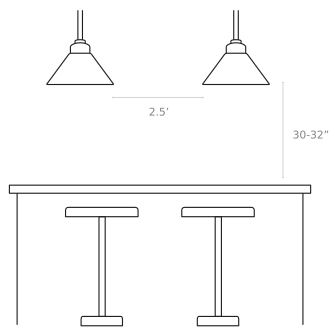
Ensure the length of a linear fixture does not exceed around 2/3 of the island length.
Leave about three feet of space between the counter surface and the lowest point of the fixture.
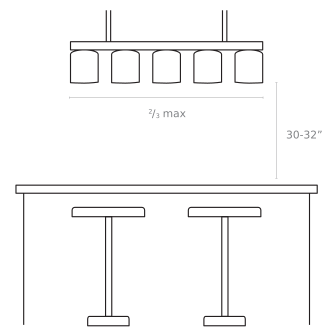
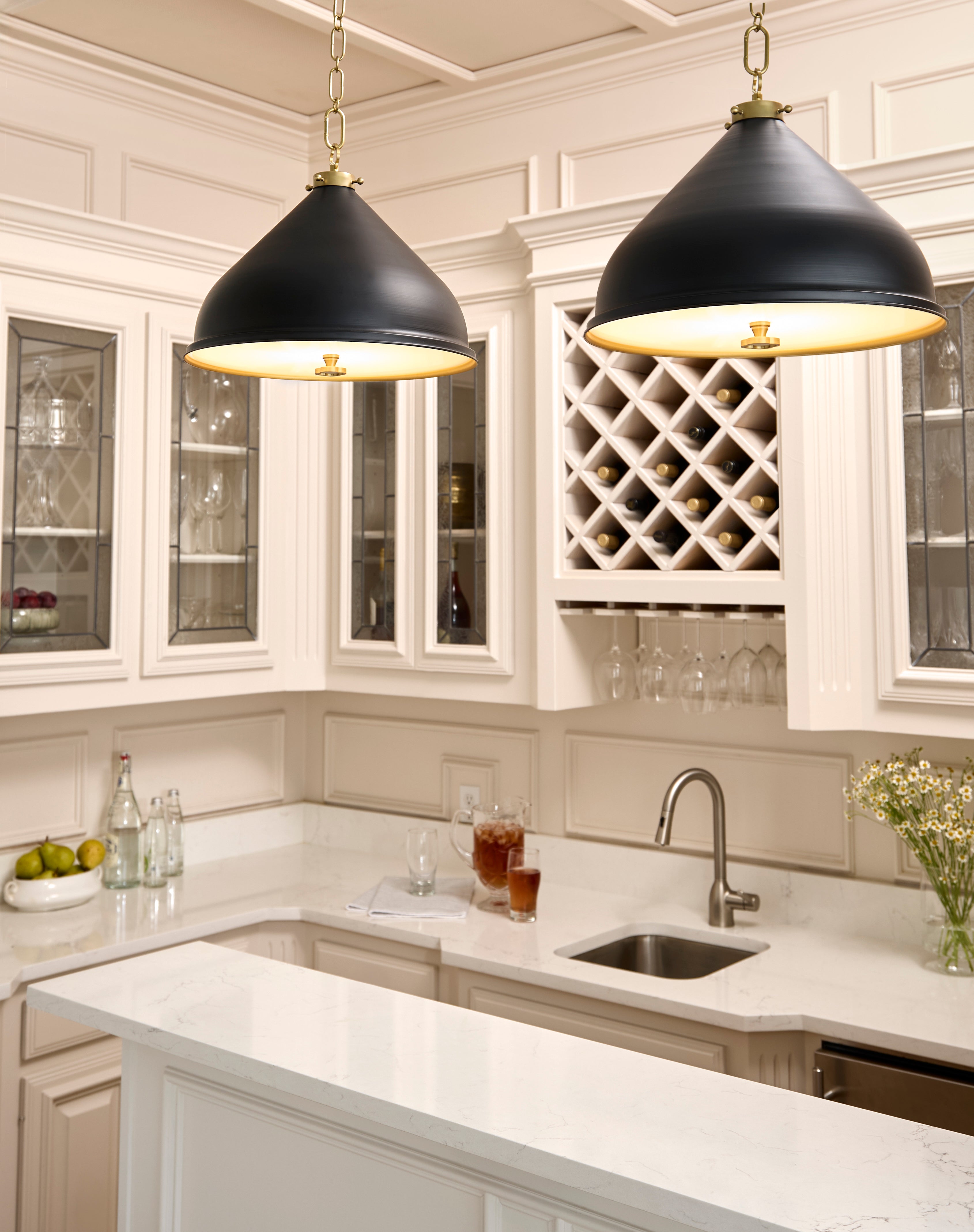
Designer Tip:
Consider the style and finish of the pendant lights. Choose pendant lights that complement the overall design aesthetic of the kitchen, whether it’s modern, traditional, industrial, or eclectic. Opt for finishes that coordinate with other fixtures and hardware in the kitchen, such as brushed nickel, bronze, or matte black, to create a cohesive look.
Dining Areas
HOW TO HANG OVER A TABLE
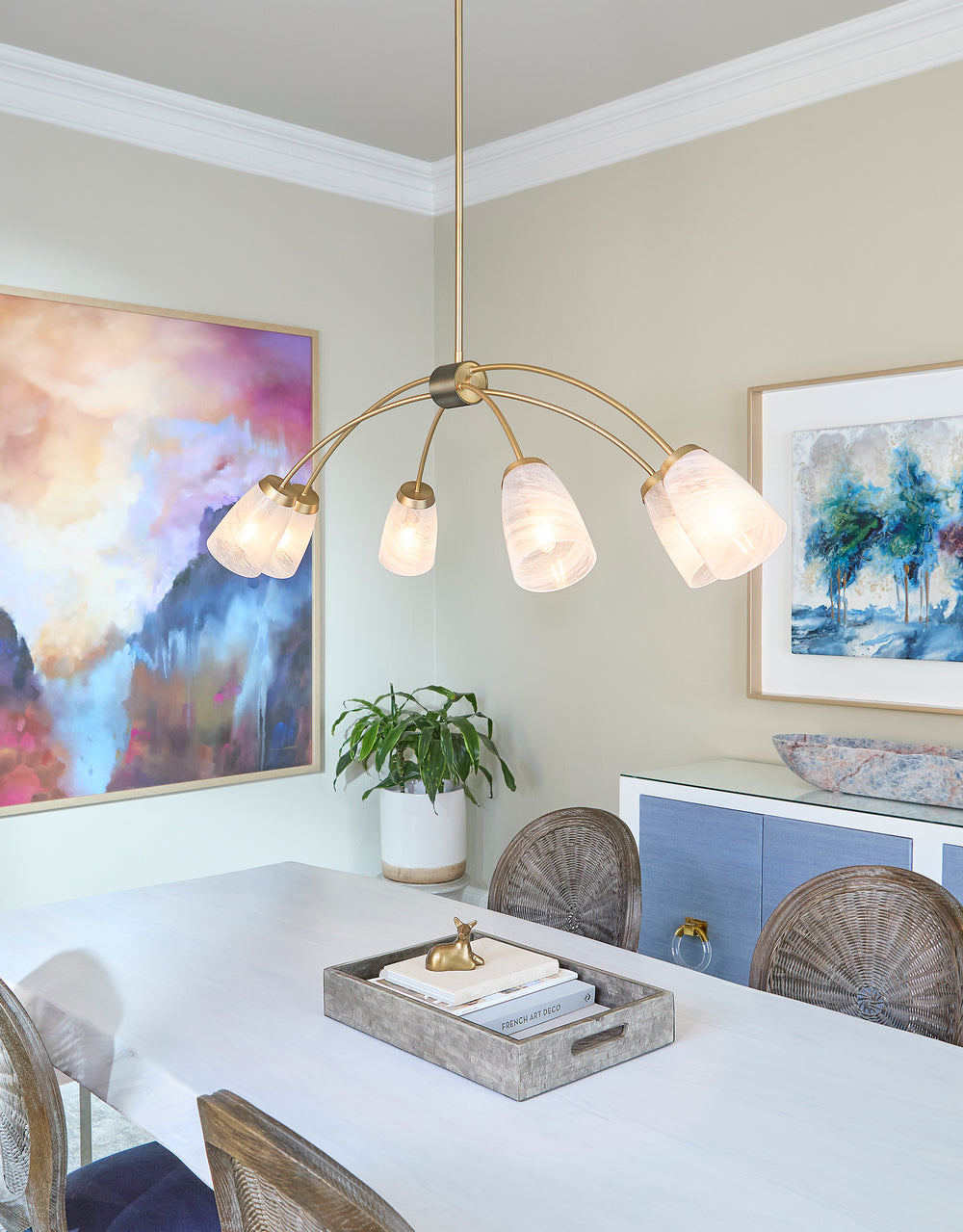
Mount the fixture at a height of about 3 feet above the table surface.Opt for a width that is 6 inches less than all edges of the table for the ideal fit.
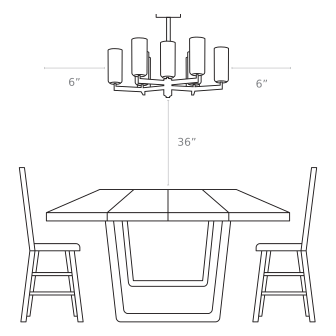
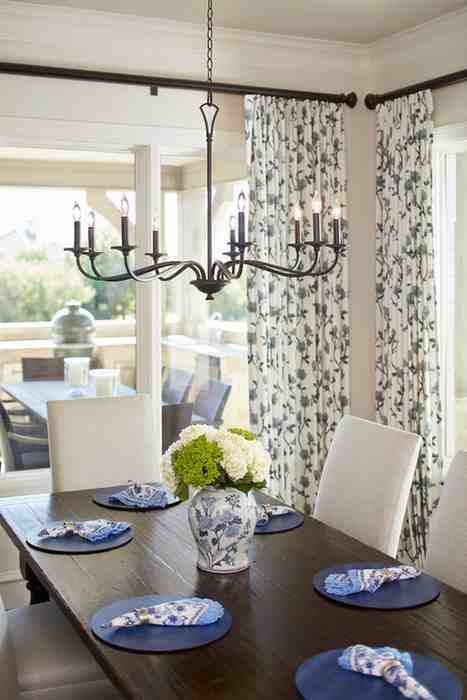
Example:
A 48 inch square table calls for a chandelier diameter of 36 inches.
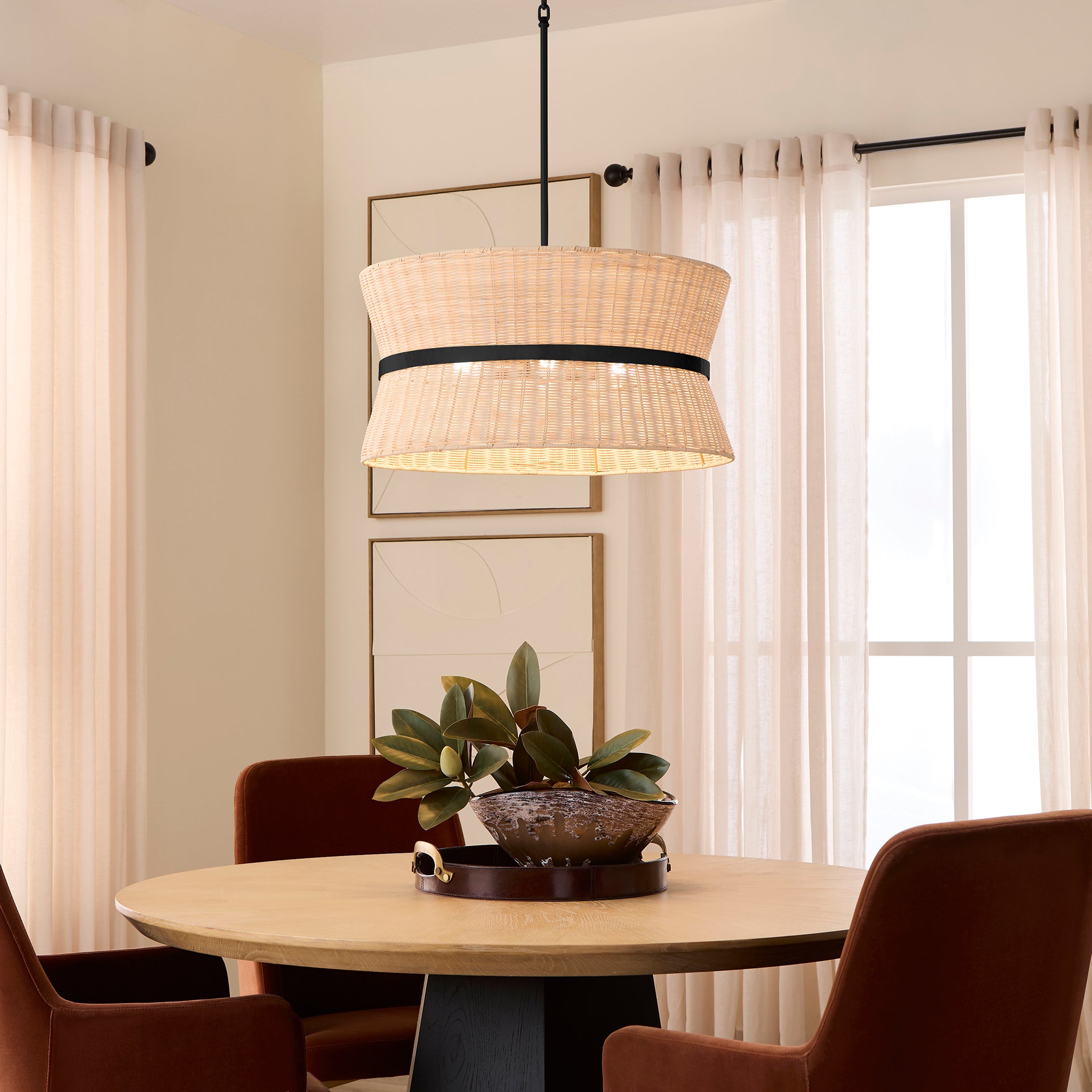
Example:
A 48 inch round table calls for a chandelier diameter of 30-36 inches.
Position the fixture 3 feet above the tabletop.
Calculate the width of your ideal fixture by subtracting about a foot from the diameter of the table surface.
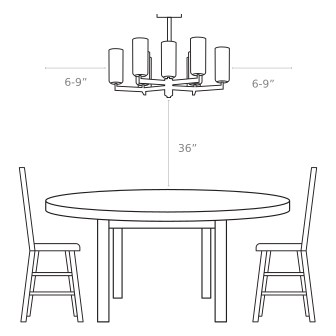
Living Spaces
HOW TO HANG IN ROOM
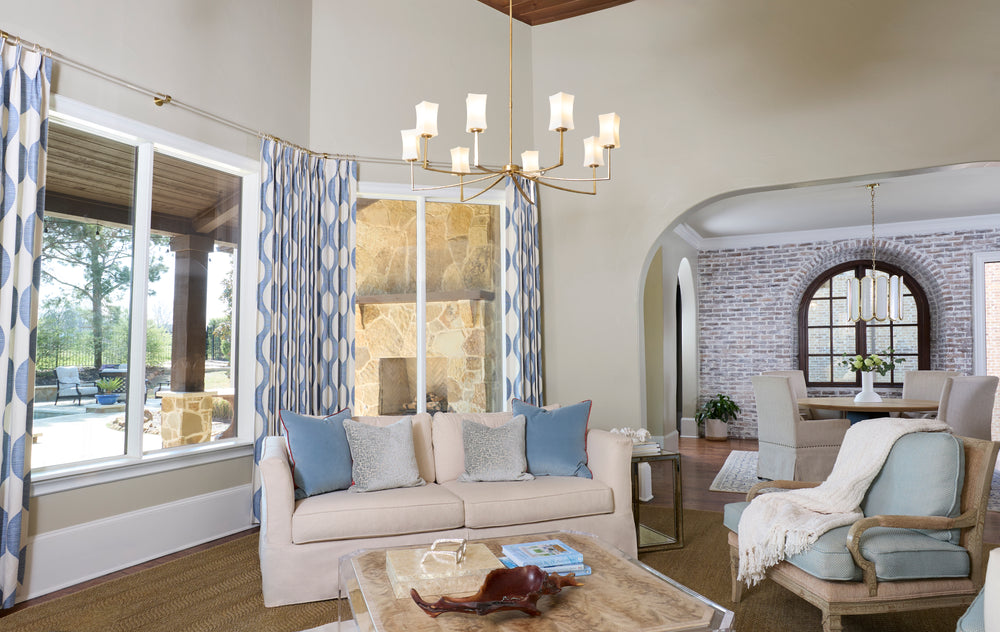
Measure the Room:
Measure the length and width of the room in feet.
Calculate Fixture Diameter:
Add the room length and room width in feet together. Convert to inches — this sum gives you the suggested diameter for the chandelier.
Determine Hang Height:
Measure the ceiling height in feet
2.5 to find the minimum hang height.
3 to find the maximum hang height.
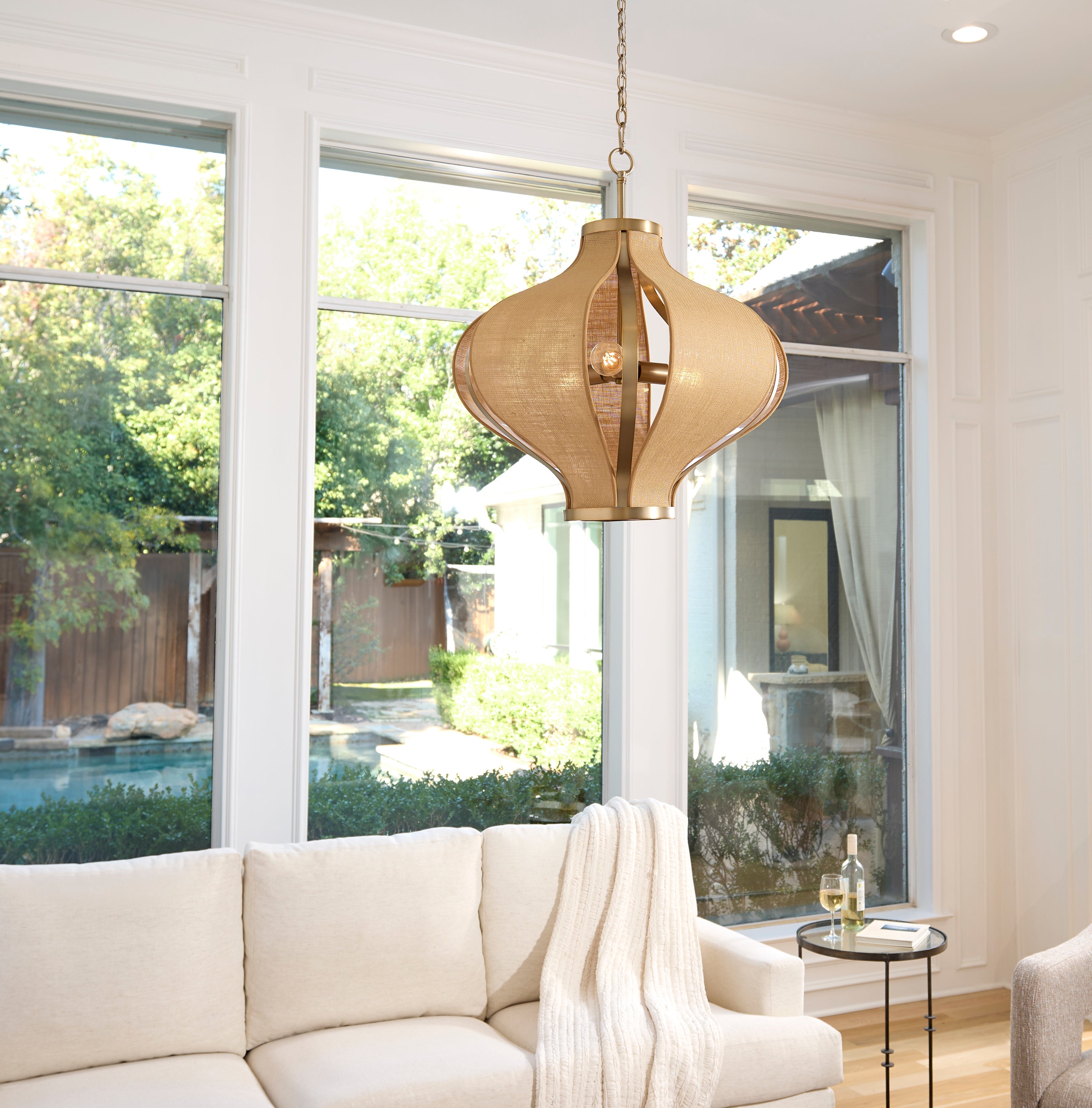
Example:
A 12'L x 10'H room calls for a suggested chandelier height of 25-30 inches and a diameter of 24 inches.
Designer Tip:
Consider Aesthetics: Choose a chandelier size that complements the scale of the room and the furniture. The chandelier should not overwhelm the space but should make a visual impact.
The Bedroom
ACHIEVE FUNCTIONAL BEDSIDE LIGHTING
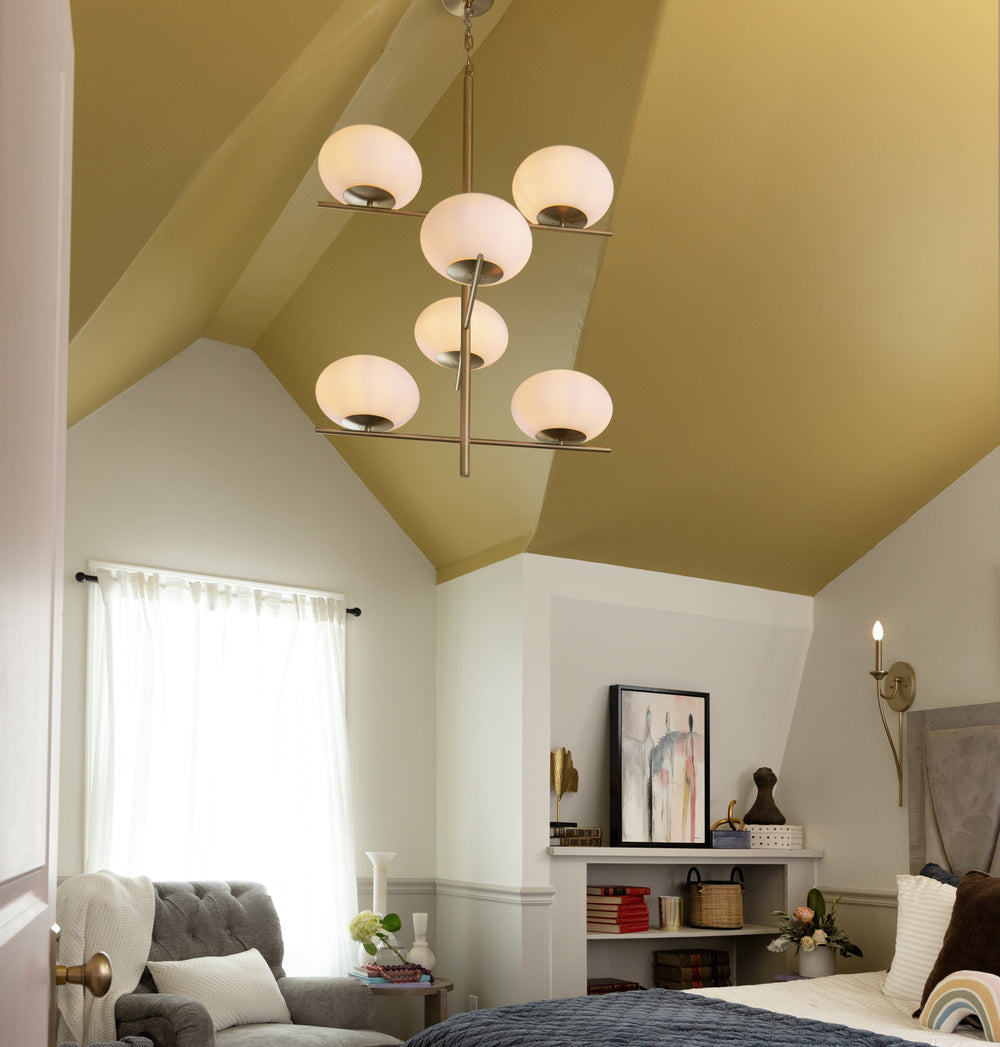
Lighting Level and Quality:
Choose a light fixture that provides adequate illumination for various activities in the bedroom, such as reading, getting dressed, or relaxing. Consider the type of lighting (ambient, task, accent) and the brightness level to ensure versatility and comfort.
Size and Scale:
Ensure that the size and scale of the light fixture are appropriate for the size of the bedroom and the height of the ceiling. A fixture that is too large or too small can overpower or underwhelm the space, affecting its visual appeal and functionality.
Proper Sizing:
Ensure that the size and scale of the hanging fixture are proportionate to the size of the nightstand and the space above it. A fixture that is too large may overwhelm the nightstand, while one that is too small may not provide adequate illumination or visual impact.
Height Placement:
A general guideline is to position the bottom of the fixture between 12 to 18 inches above the surface of the nightstand, allowing for comfortable reading and bedside tasks without obstructing the view.
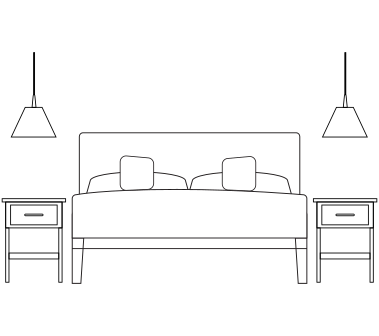

Ensure that the sconces are mounted at a height that allows for comfortable reading and bedside tasks, typically around eye level when seated in bed.
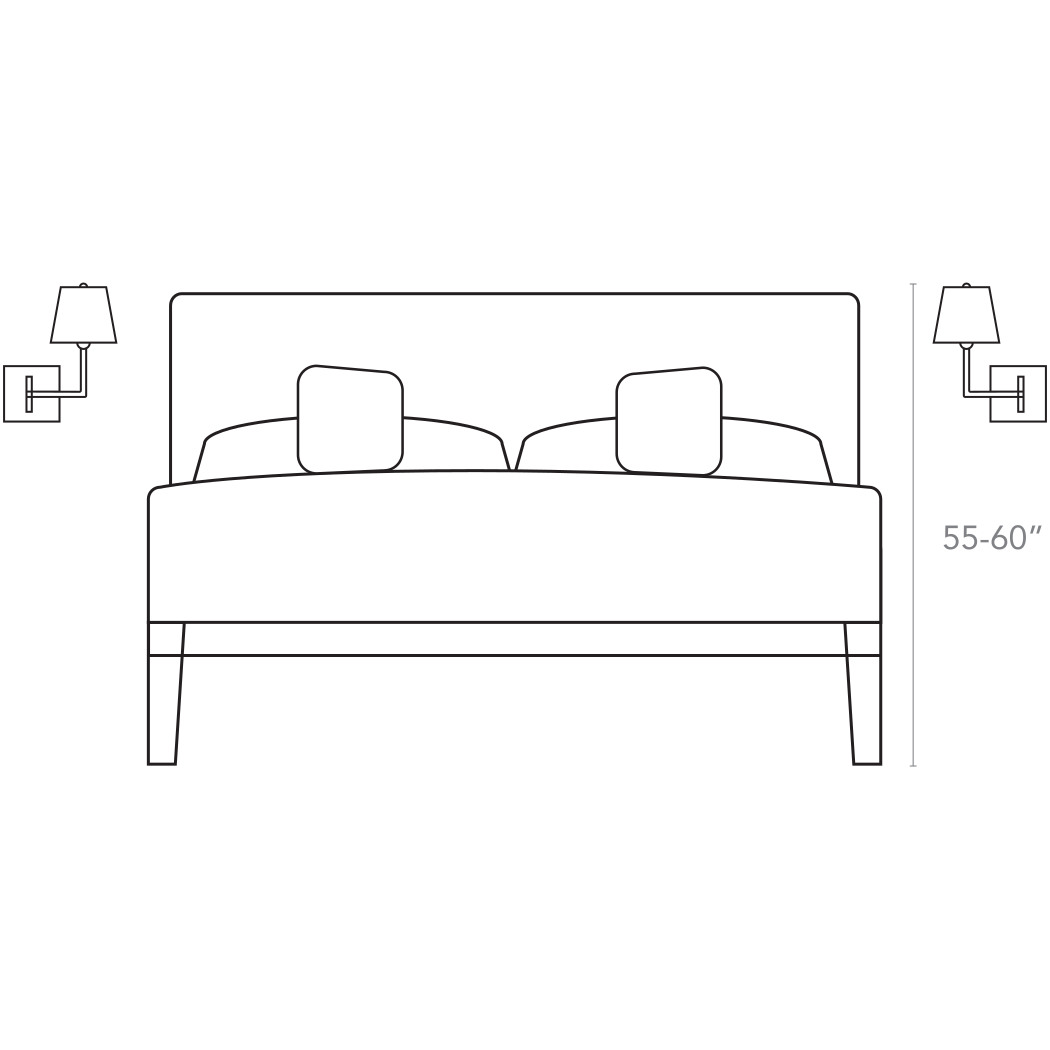
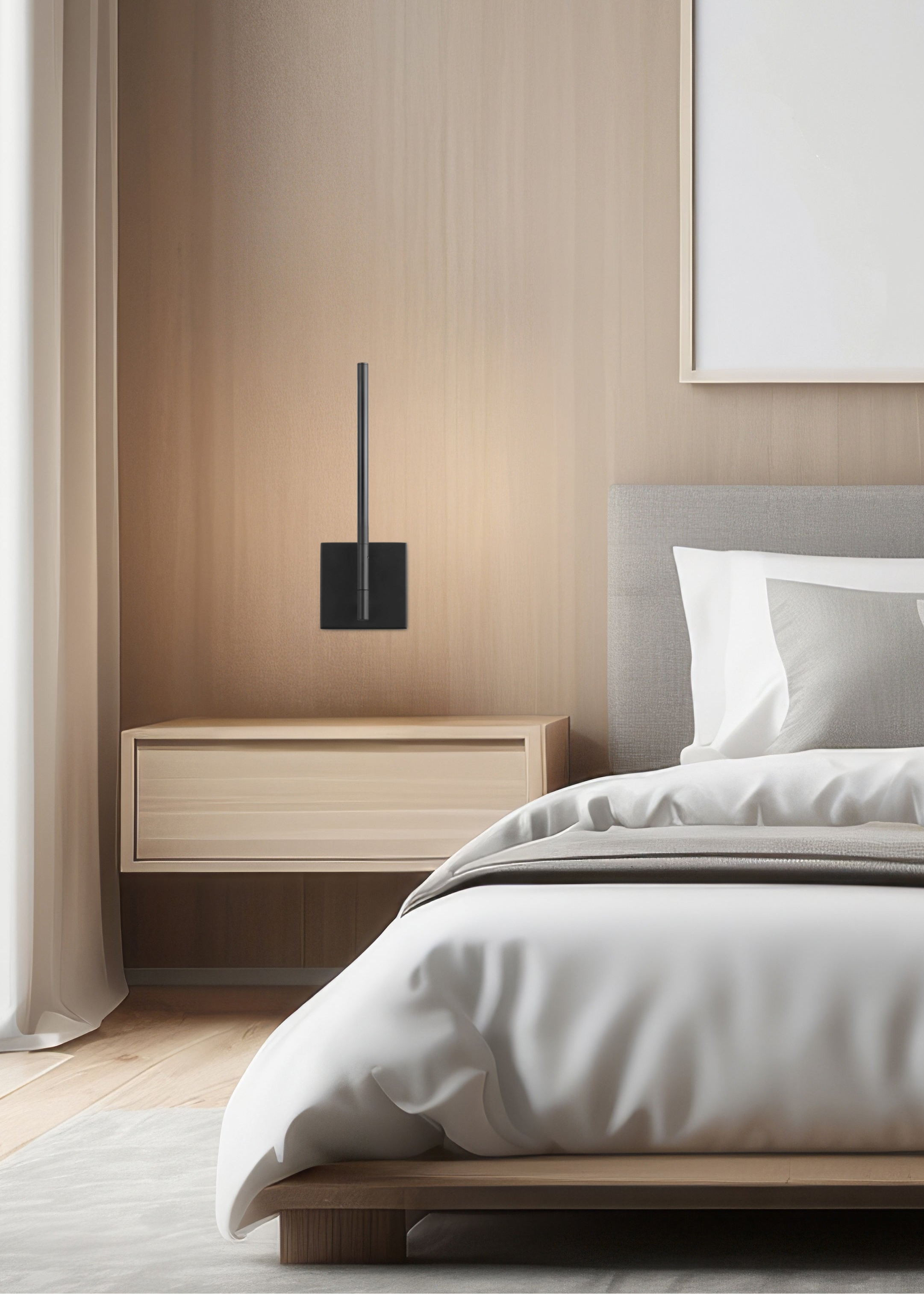
Designer Tip:
Consider dimmer switches or adjustable brightness levels. This allows you to customize the lighting ambiance according to your mood or time of day — whether you prefer soft, ambient lighting for winding down in the evening or brighter task lighting for reading.
Outdoor & Exteriors
HOW TO CREATE A WELCOMING ENTRY
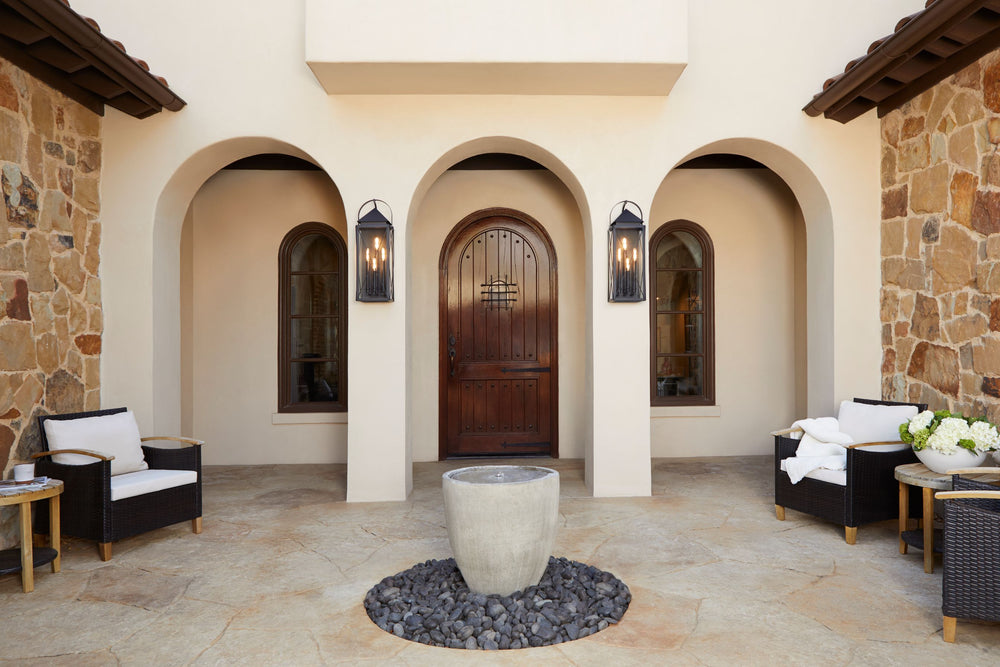
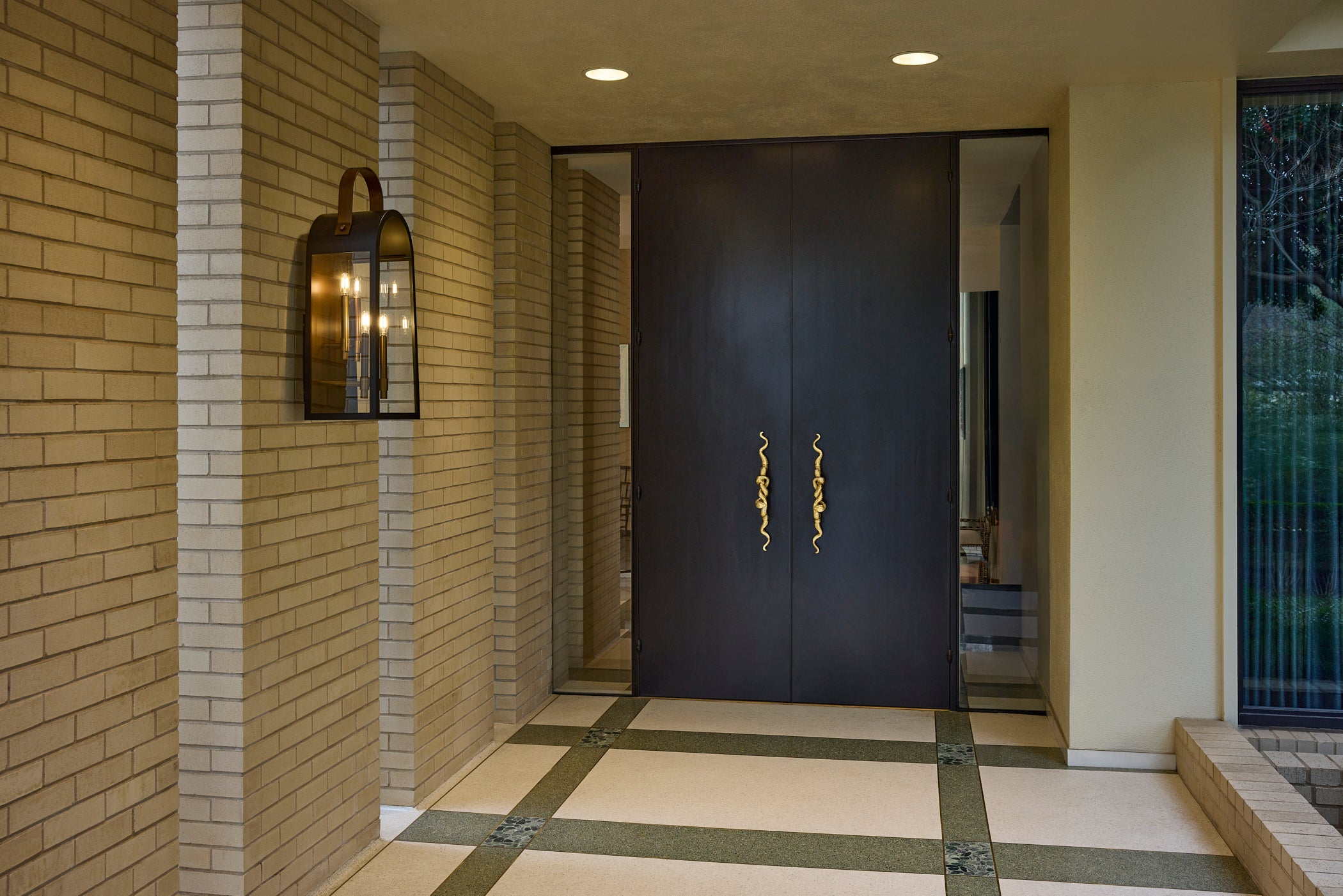
Select a hanging fixture that is proportionate to the size of your outdoor entryway. A fixture that is too small may get lost in the space, while one that is too large may overwhelm it. Aim for a size that provides adequate illumination without obstructing the entryway or door.
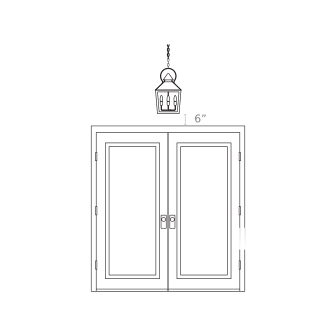
Ensure that the fixtures are installed at a height and position that provide ample illumination for safety and security — without obstructing the door’s operation or interfering with any architectural features.
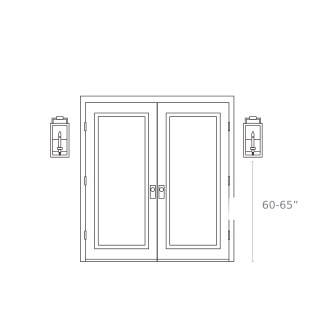
Designer Tip:
Since the fixture will be exposed to the elements, choose a wet or damp rated product. Coastal Grade weather-resistant materials are a great choice as well.
Garage Doors
HOW TO CREATE A STYLES DRIVEWAY

For garage door side sconces, place exterior wall sconces around 5 to 6 feet from the ground. As a general rule, the size of the fixture should be about 1/4 of the height of the garage door.

Sconces above the garage door should be installed 8 to 12 inches above it, ensuring that the bottom of the shade does not hang lower than the garage frame.
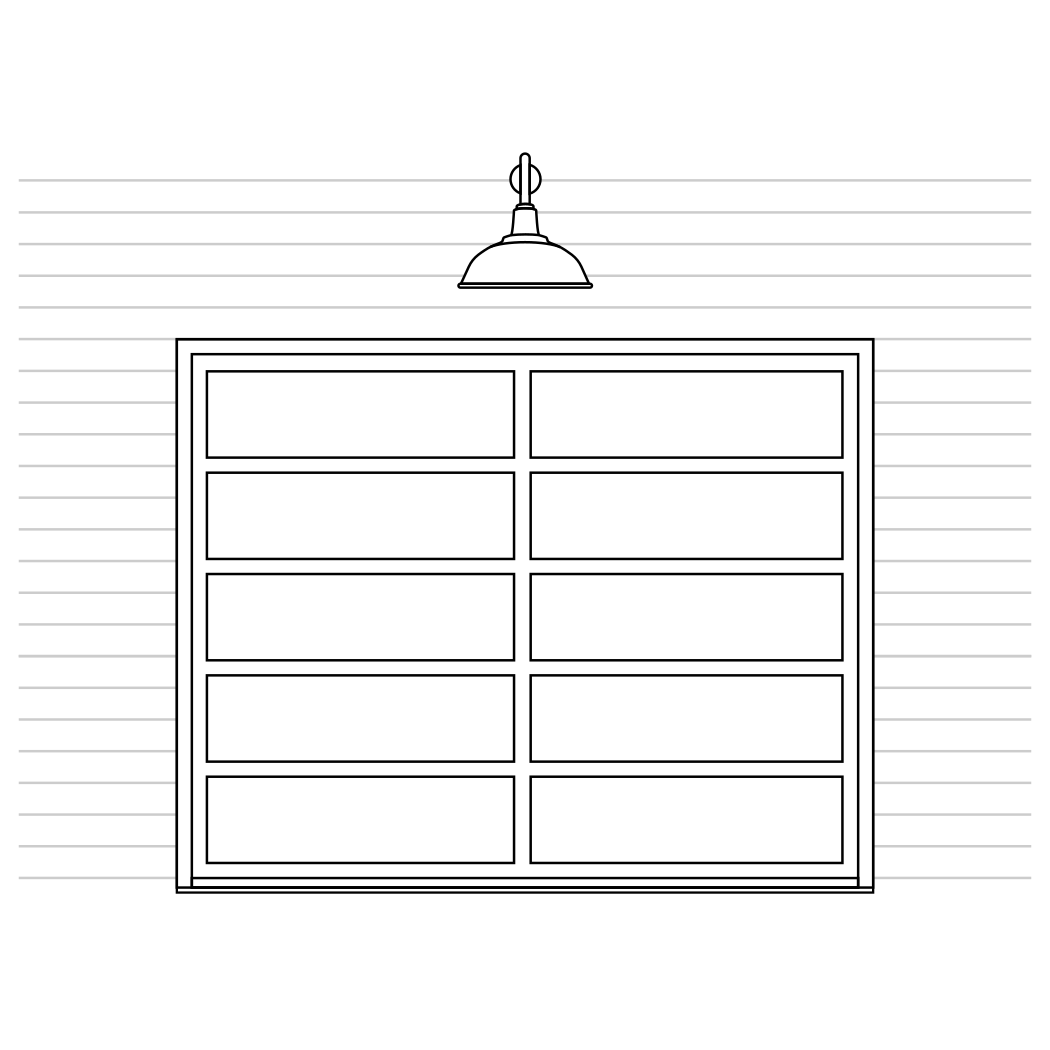
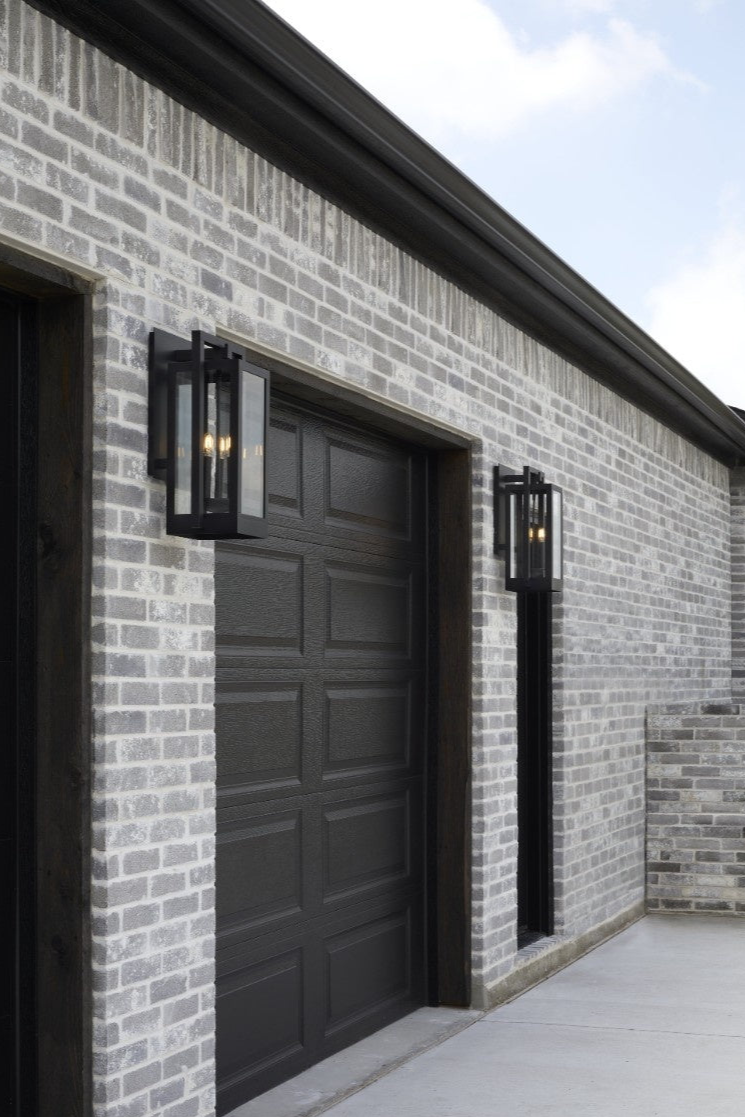
Ceiling Fan
CALM, COOL & COLLECTED
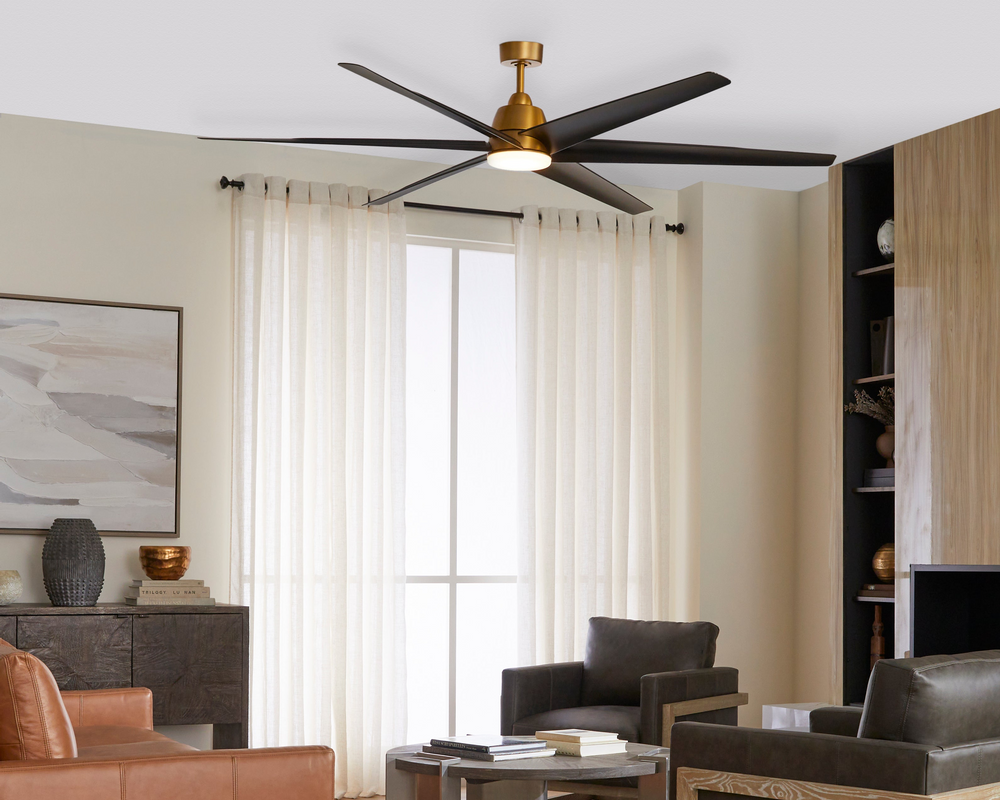
Designer Tip:
Opt for Integrated Lighting: Consider ceiling fans with integrated lighting fixtures to provide both illumination and air circulation. This simulates the need to separate lighting fixtures and can help save space, especially in similar rooms.
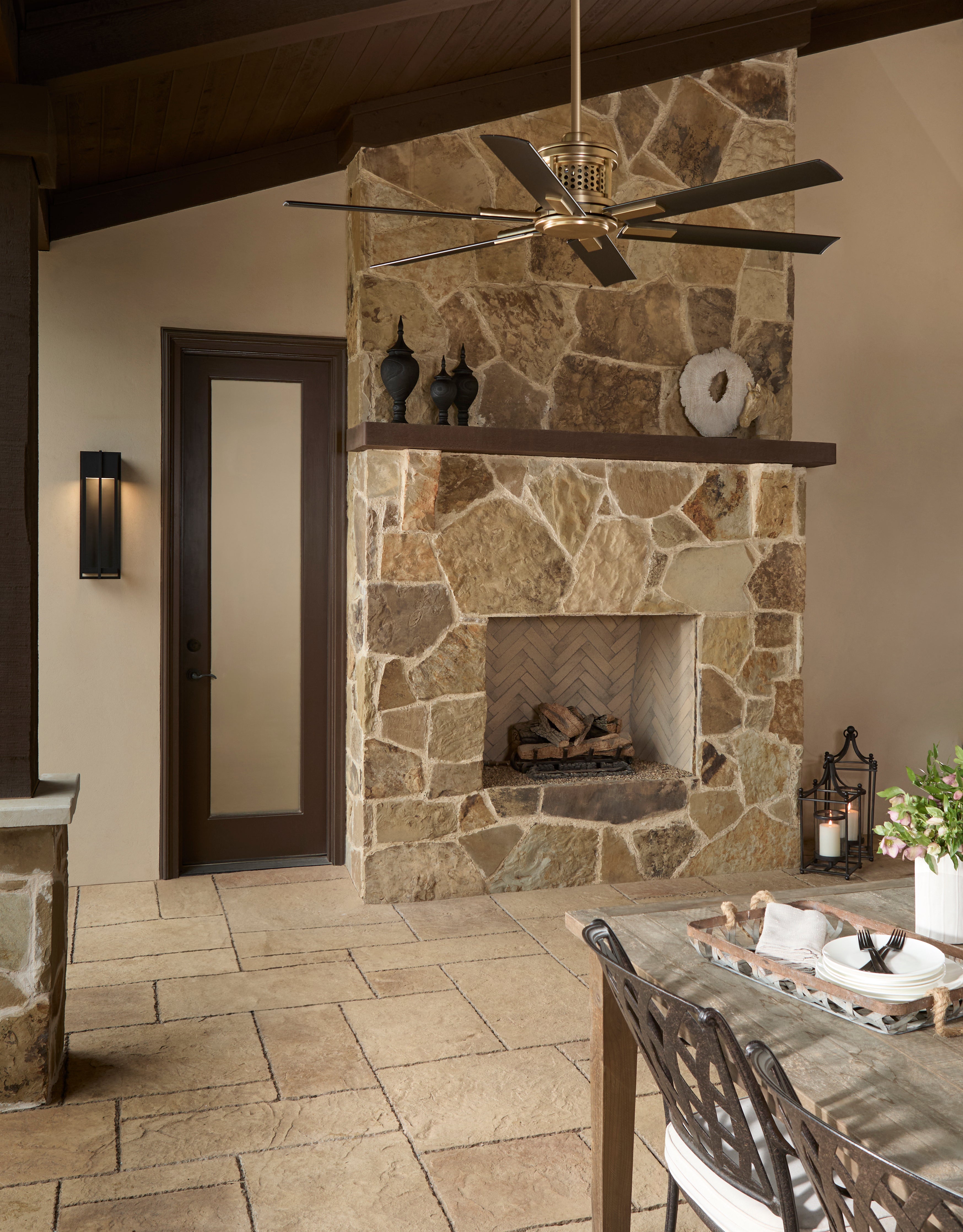
Make sure your ceiling fan is installed at an efficient height. For standard ceilings, the fan blades should typically be mounted at least 7 feet above the floor. For higher ceilings, consider using a downrod extension to lower the fan for optimal airflow.
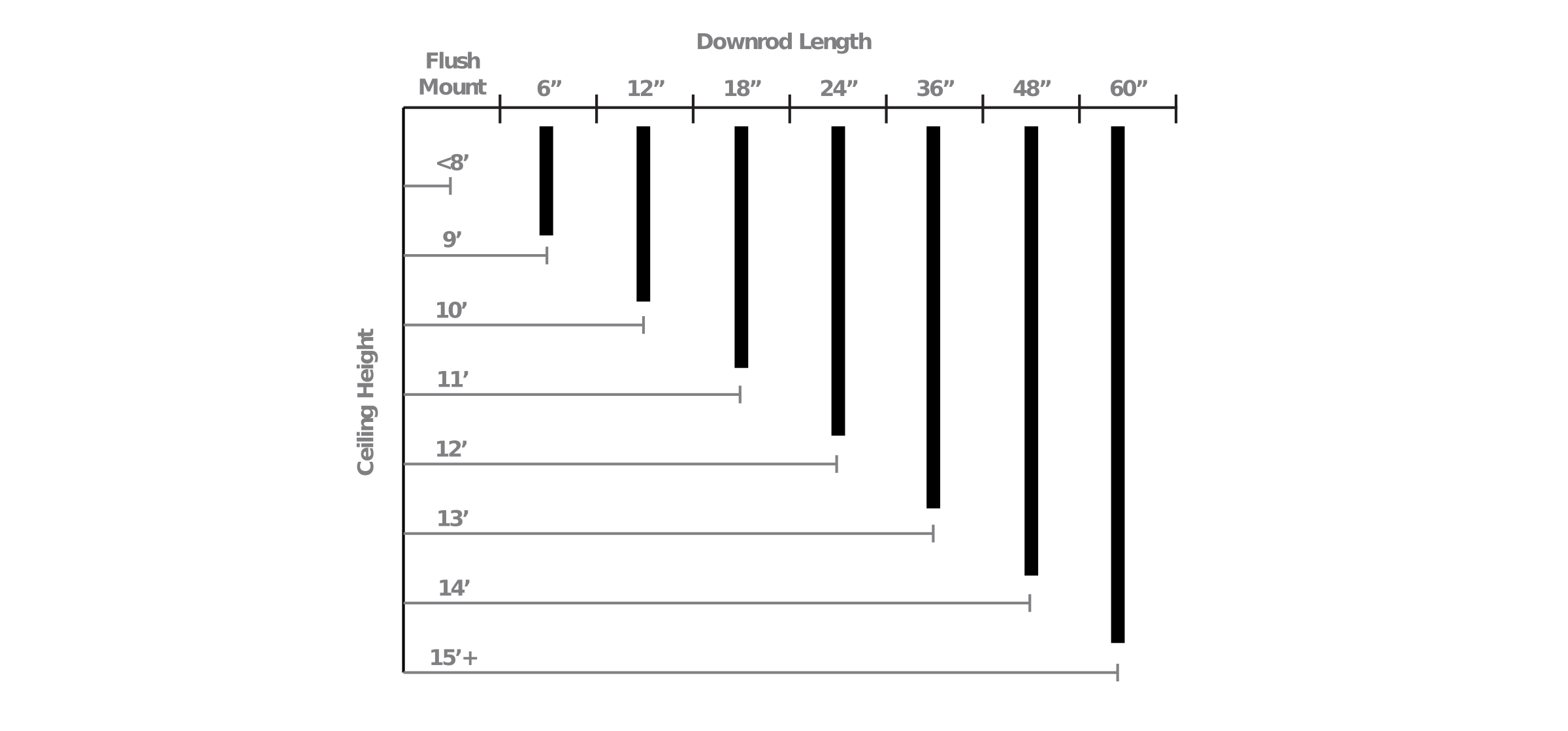
Choose the right diameter of your ceiling fan based on the square footage of your space.
Formula: Diameter = 2 × Radius

Ceiling Fan
MOUNTING & CONTROLS
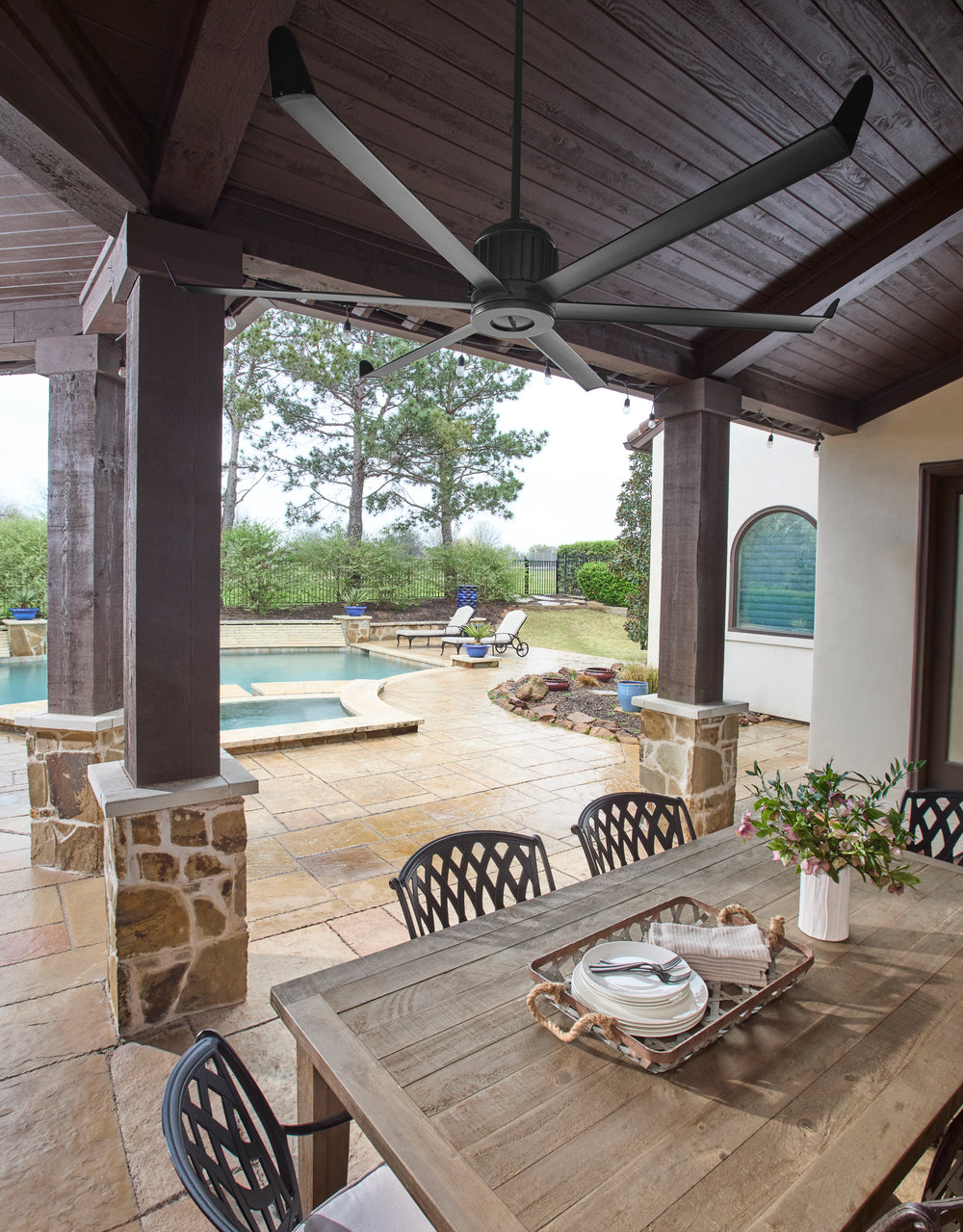
For proper installation, make sure the ceiling fan is 18 inches from walls7 feet from the ground to the base of the fan

Choose the right control to meet your everyday lifestyle.

Designer Tip:
Consider Blade Finish: Pay attention to the finish and material of the fan blades. • Wood blades add warmth and texture • Metal blades provide a sleek, modern look Choose a finish that complements other room elements such as furniture, flooring, and lighting fixtures.






